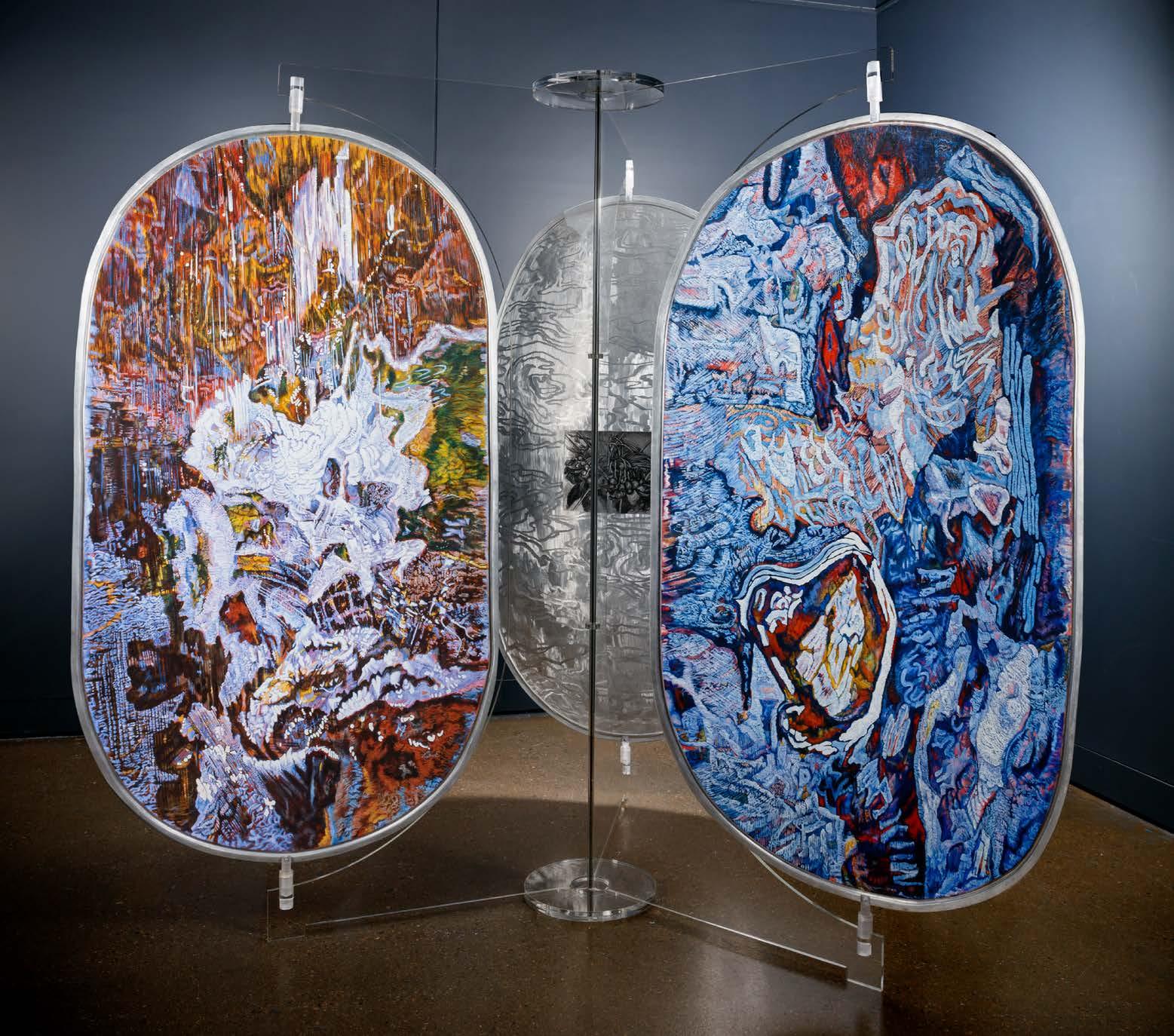
6 minute read
Laura Castell
b. 1961, Caracas, Venezuela
Venezuelan-born artist Laura Castell has lived in Australia for twenty-nine years. A biologist for twenty years, Castell wasn’t introduced to the possibilities (and love) of art until 2005, when she attended her first TAFE drawing class. Castell’s natural ease in print media has allowed her to quickly find two abiding strands of work; nature and the human condition. She is not only interested in capturing the simple beauty of nature but also in capturing the emotional strength of people who find themselves in difficult circumstances, often by actions completely removed from them. Castell’s work I Would Do Anything For You (2018) attempts to express the strength and determination a person can have to do anything possible to give their loved ones a better life. In the figure of a mother and child, the statement in the title ‘I would do anything for you’, Castell symbolises the strength of a parent and the readiness to try anything necessary to give their child a better future.
Barbara Cheshire
b. 1946, Atherton, Queensland
Growing up in a family of blacksmiths, fire has been a very important aspect of Barbara Cheshire’s life. She experiences the world and creates work from a spiritual perspective, with the symbol of fire being a strong element throughout. Although fabric, and needle and thread were the early tools of Cheshire’s creations, it wasn’t until her forties when Fine Art became a passion, allowing her spiritual and creative lives to mesh. To Cheshire, creative process acts as a conduit to the inner self and belief systems through the use of metaphor and colour to signify the spiritual context. In this she strives for a natural aesthetic through a contemplative and meditative mindset, surrendering to the unknown. Her Shield Installation series (2008-9) layers the sensory and spiritual perceptions of place and subject, and when sketching in-situ, Cheshire becomes in tune with both, unlocking her own complete human experience. This method releases a natural creative rhythm and her work takes on a personal inner cadence of expression.

John Coburn
b. 1925, Ingham, Queensland
The deconstruction of imagery and abstract reflection of spirituality is a typical hallmark of the work of John Coburn. Born in Ingham in 1925, Coburn went on to assist the Australian war effort in the Navy as a radio operator at age seventeen. After returning to Queensland, he departed to Sydney for art school, graduating in 1952, briefly teaching school while continuing to exhibit in galleries around Australia. In 1966 the artist was invited to design tapestries for the world-renowned Aubusson Workshops. He moved to Paris, France, three years later, and immediately found popularity with his designs in France as well as in the USA and back home in Australia. In the 1970s, Coburn returned to Australia with the heightened artistic confidence to pave his own way with his own unique style of painting which he is so well renowned for today; a distinctly Australian abstract visual language, combining the influences of Western European, Roman Catholic and Aboriginal spirituality with links to nature, to form a distinctive and resonant visual language.
John Coburn
Night Celebration 1990
Colour screen print on paper
88 x 67.5 cm (image); 110 x 81 cm (sheet)
Acquired 1995
City of Townsville Art Collection
India Collins
b. 1978, St Agathe, Canada
Cairns-based artist India Collins has made North Queensland home, bringing her diverse artistic interests with her. The works in Utopia Tropicae are created entirely from carefully selected pre-loved materials. Various pieces of clothing, underwear, accessories and items which are stereotypically associated with women have been woven into a tapestry, creating a bespoke landscape of colour, shape and texture. Every element has been touched or worn by a woman. The different elements each represent a unique history: whether items were worn to make one feel confident, beautiful, empowered or safe, or contributed to an image they sought to project, or represented a way of life or interest that was dear to them. The work is a celebration of the strength, versatility and fragility of women. Collins has recently exhibited in Strand Ephemera and has produced a number of solo and collaborative street art projects in the greater Cairns area.
India Collins Have You Seen My Pink Scarf 2018
Mixed media, textiles and LED lighting
Various sizes 40 x 70 cm – 60 x 70 cm Courtesy of the Artist

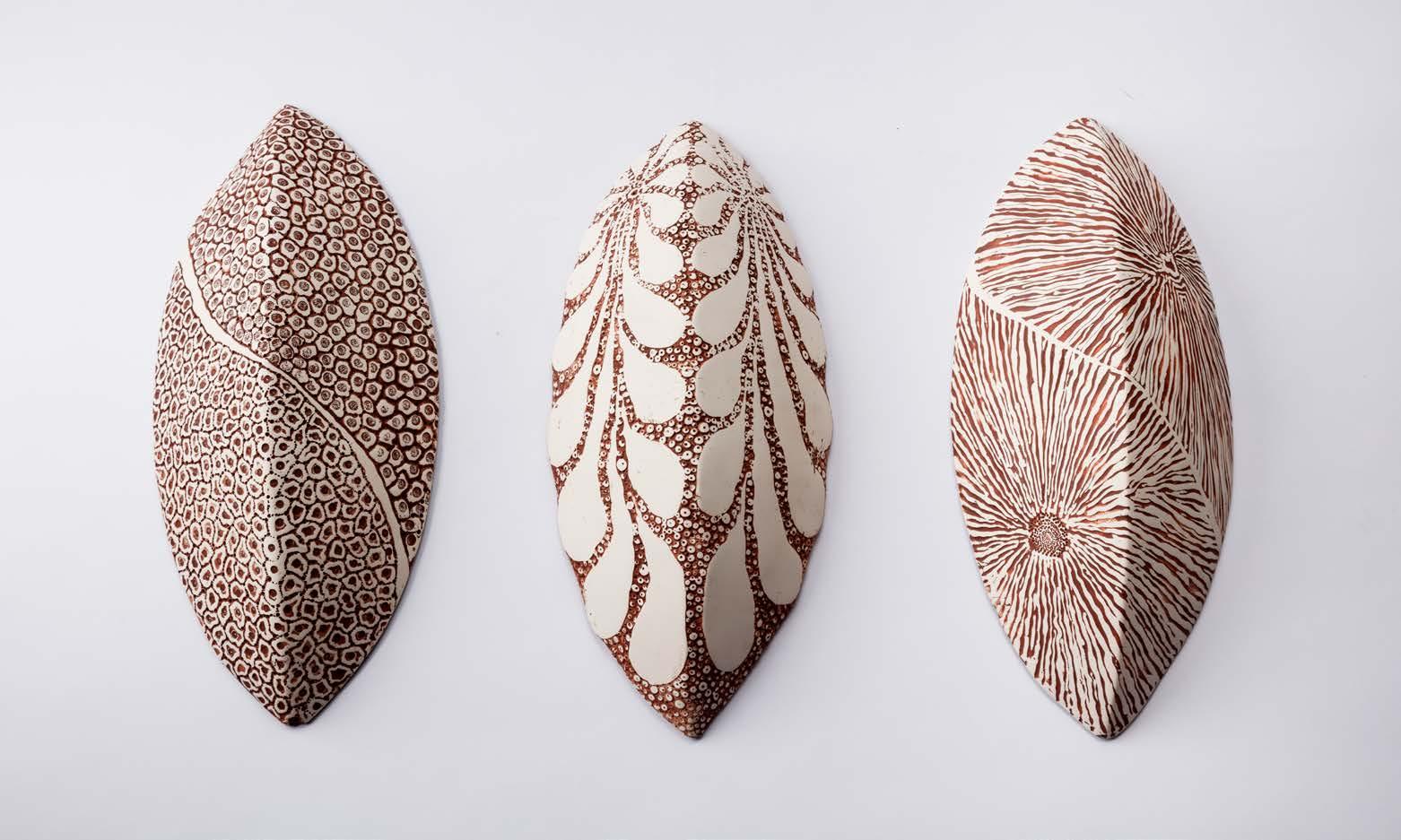
Len Cook
b. 1951, Bacchus Marsh, Victoria
Len Cook’s ceramic practice has long incorporated forms and patterns inspired by the rich natural diversity of North Queensland, particularly the fascinating biological abundance of the Great Barrier Reef. Cook started snorkelling off Magnetic Island in the mid-1970s and was instantly hooked (no pun intended), senses ignited by the colours and patterns of marine life. The works in Utopia Tropicae extend ceramics beyond the functional realm of Cook’s exquisite pottery, and into the decorative arena. Each of Reef Reflections is a different meditation on pattern; the incised clay surfaces each evoking a different species and surface. Cook’s passions extend well into education, which has in recent years seen the artist working on a number of projects with North Queensland indigenous communities. Cook also runs the iconic Paluma Pottery in the idyllic rainforest town.
Ray Cook
b. 1962, Townsville, Queensland
Ray Cook’s photographic practice, which regularly incorporates a theatrical eroticism, black humour, and reappearing models, examines, celebrates and subverts Australian beefcake, blokedom, and Gay Culture, often at the same time. Cook’s images are at turns bleak, performative and tongue-in-cheek, with trademark self-deprecating irony couched in icons of masculinity and occasional self-portraiture. As is the case in both Cedric’s Testicle (1990) and 1986 (2005), scenarios are carefully set up using theatrical sets and various carefully-chosen props, allowing unplanned moments and off-the-cuff incidents to unfold for photographic capture (such as Ray’s partner balancing a can of Carlton Mid on the model’s prop erection). Stubby cans and ‘wife beater’ singlets are as much a part of Cook’s visual lexicon as mirror balls, sequins and pot plants, at once campily butch and laconically North Queensland. The everyday butts up against the theatrical, like a red velvet curtain draped over oil-specked concrete.
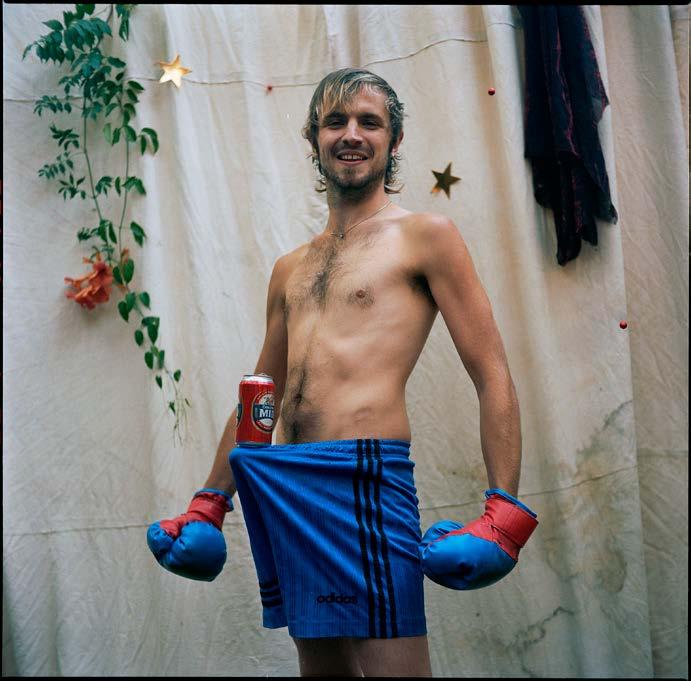
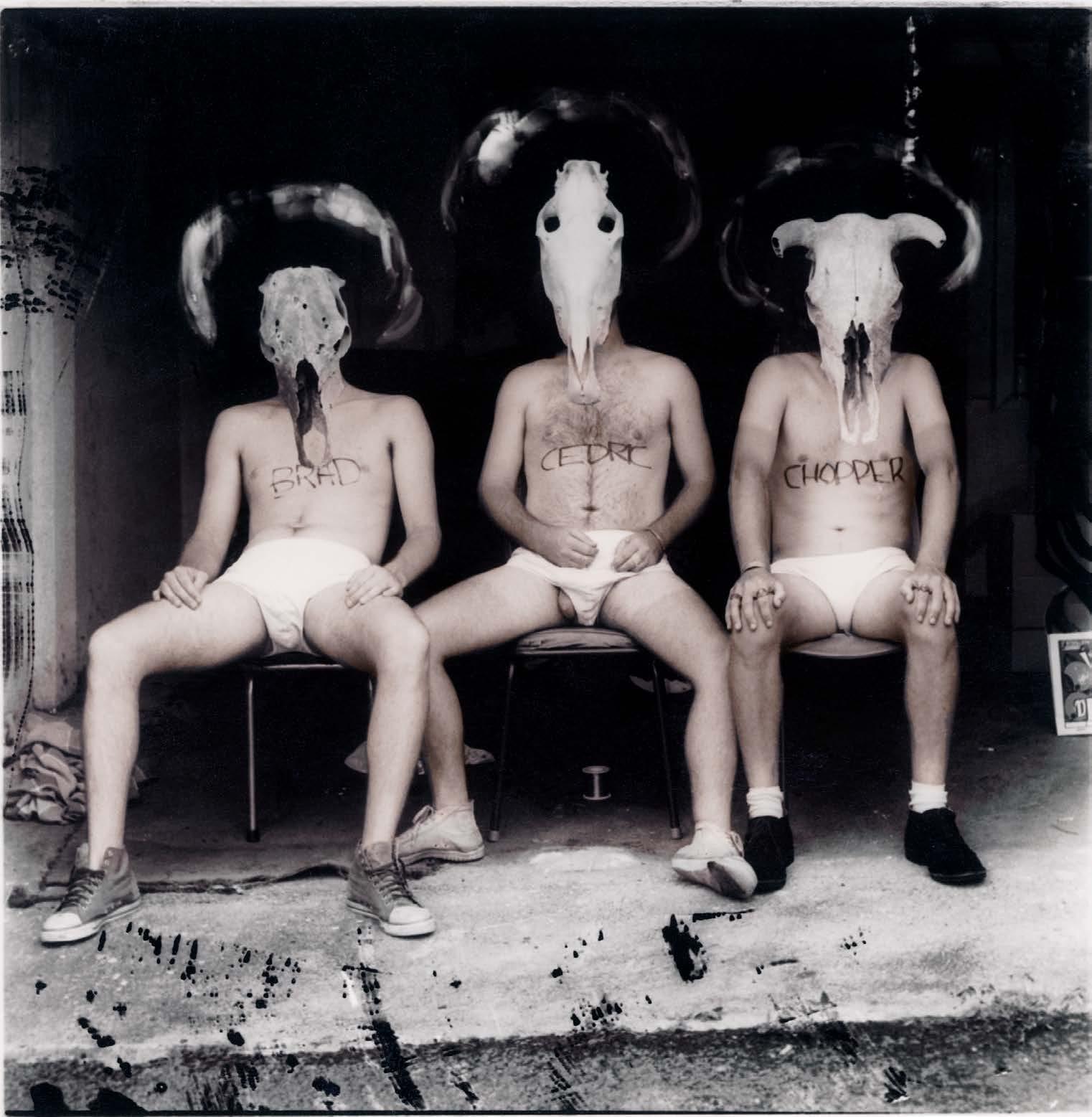
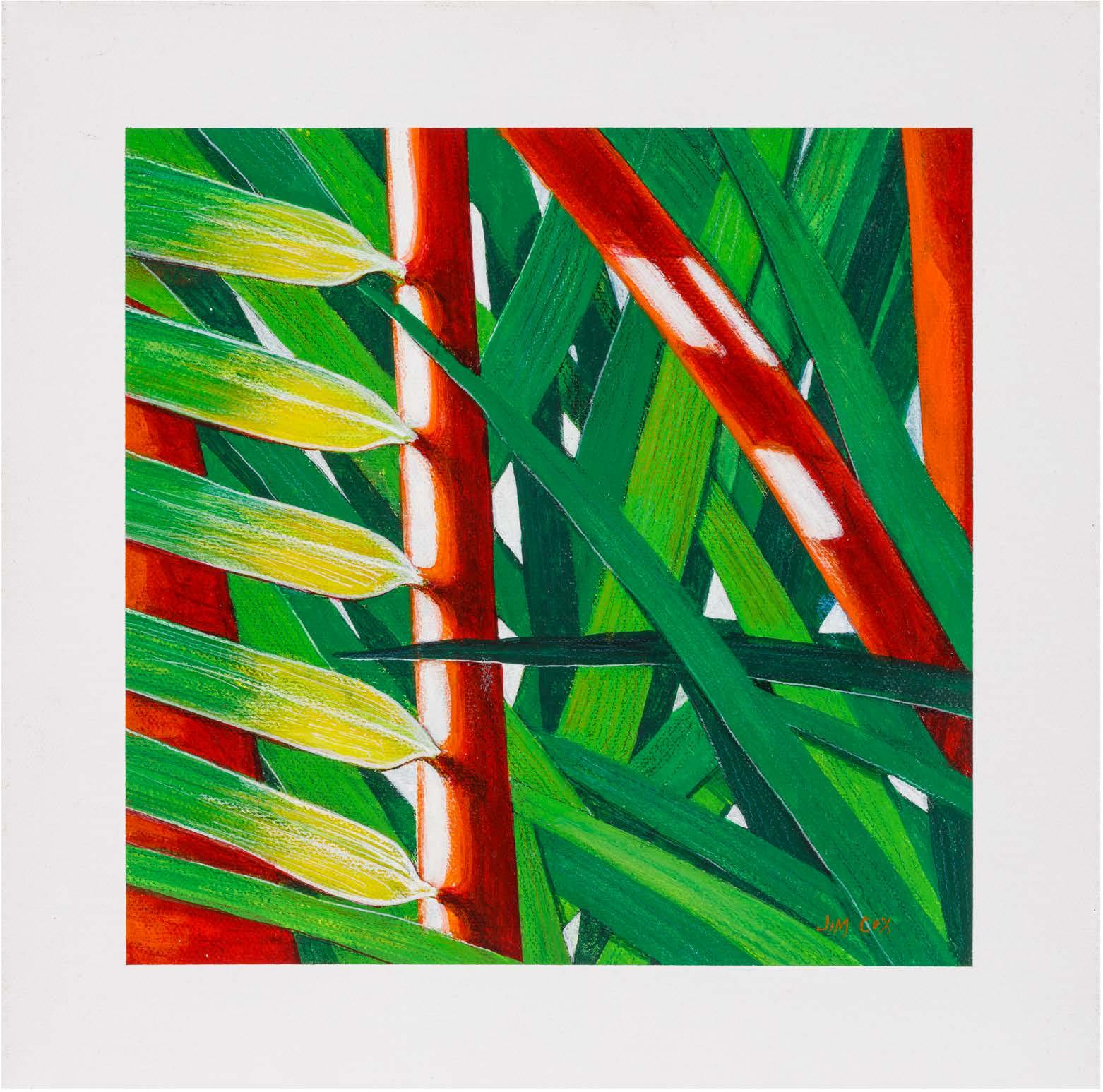
Jim Cox
b. 1939, Melbourne, Victoria
Jim Cox began his artistic tuition very early before working in the industry for fourteen years, in Melbourne, Sydney, and Adelaide, honing his craft in drawing, painting and illustration. Moving to Brisbane to take up a teaching position at the Queensland College of Art, Cox discovered a passion for education. Alongside Robert Preston, Cox developed the diploma of Visual Art for the Pimlico TAFE campus, which, through its rigorous grounding in drawing and theory, was the beginning of what many consider the golden age of visual practice in North Queensland. After teaching at a tertiary level for twenty-six years, Cox retired in 1996. Since then, the artist has travelled extensively, settling in the Sunshine Coast Hinterland in 2002. There he has worked with Landcare groups, planted a rainforest, continued to paint, illustrated books, and teach as the fancy takes him, as well as continuing to mentor emerging artists. Natural history has been a life-long interest to Cox and that passion is reflected in his work.
Ray Crooke
b. 1922, Auburn, Victoria d. 2015, Palm Cove, Queensland
Ray Crooke is one of the quintessential interpreters of the North Queensland landscape. Crooke’s work follows his life, often depicting tropical imagery from his years in Townsville serving for the AIF unit during the Second World War, from his visits to Cape York, Thursday Island, and the Torres Strait Islands. Crooke was stimulated by the tropical environment and the solitude that was present in such remote regions. He was strongly inspired by the culture and colours of the Torres Strait Islanders and would often attend church with the locals and take in the colourful clothing of those around him, adapting the subjects and colour palette in his own work. Crooke‘s oeuvre included still life, landscape, and portraiture. This influence is seen in both works chosen for this exhibition. Cairns, North Queensland (1957) is unusual in style for Crooke. This hand-coloured screen print depicts the view from a traditional wooden Queenslander window, overlooking the neighbouring houses and tropical palm trees. The work is crisp and clear, with the simplicity of the line work allowing for the energy of the view to be felt. Islanders and Church, Thursday Island (1955) is a perfect example of Crooke’s characteristically dreamlike depictions of island life, the vivid hues and deep shadows evoking the Northern humidity.
Cairns, North Queensland 1957 Hand-coloured screen print on paper 33.9 x 44.5 cm
Purchased with the assistance of the Townsville Art Society 1994 City of Townsville Art Collection
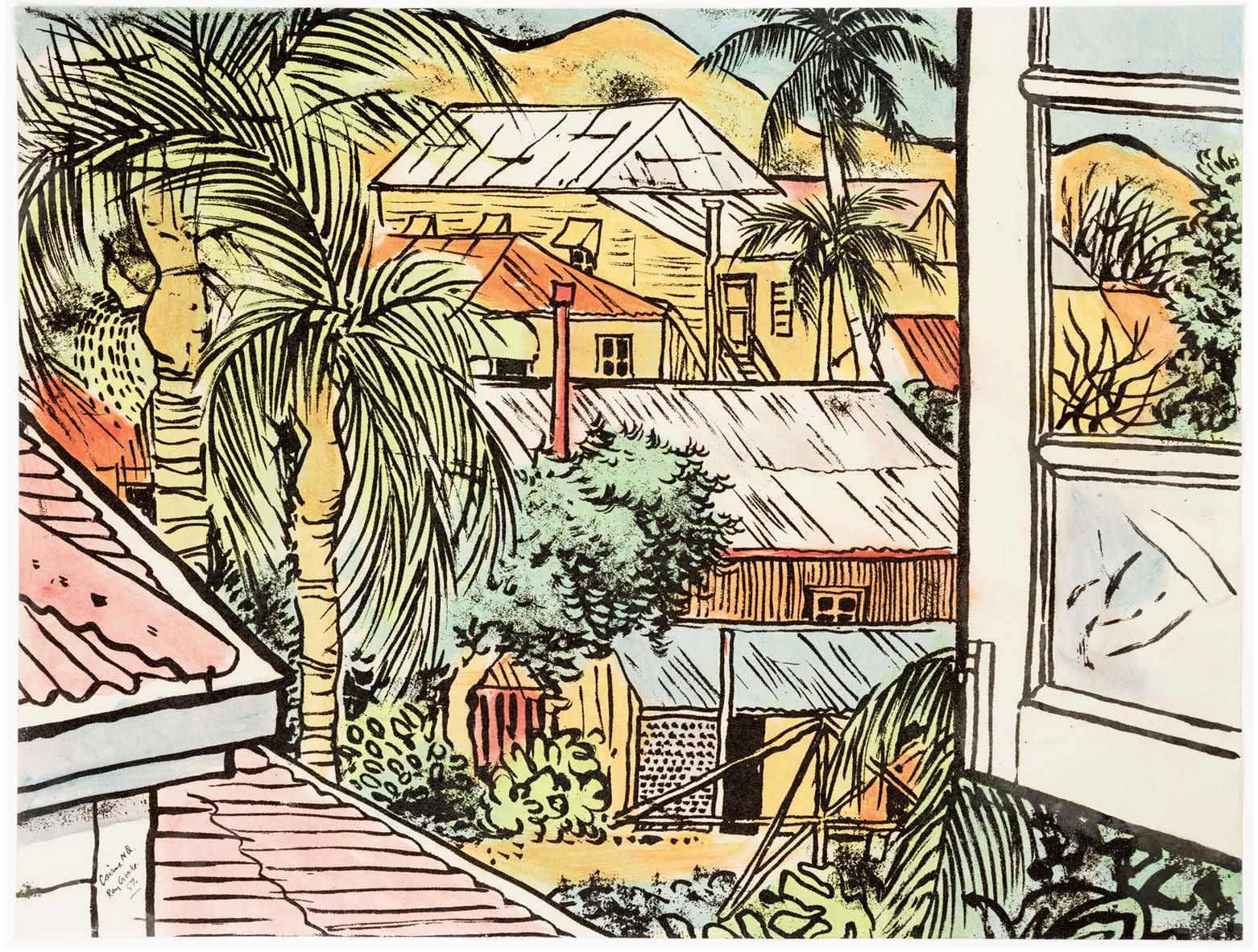
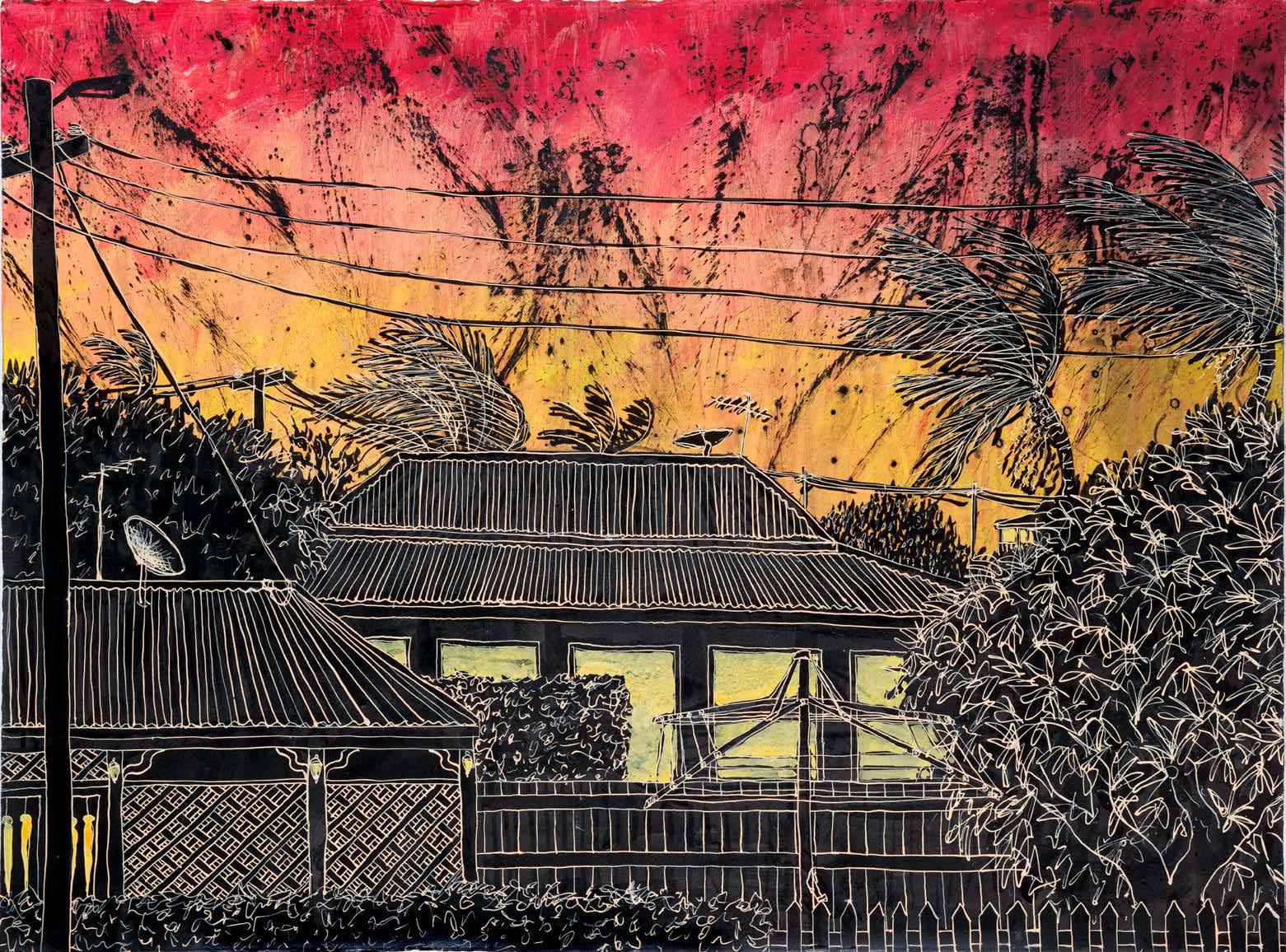
Erin Dunne
b. 1990, Rockhampton, Queensland
Hailing from Rockhampton, Erin Dunne has been busily creating work for a number of exhibitions around Queensland. Dunne’s drawings have been surprising audiences with their mix of iconic tropical imagery and mischievous deployment of bogan Australiana, devastatingly coupled with allusions to romanticism and the familiarity of regional suburbia. Somehow this seemingly paradoxical modus operandi becomes Queensland in a distilled form, with its allocation of equal footing to dry humour and sincere love of place and space. Dunne’s The Aftermath (2017) is an exquisitely rendered drawing of a burned out Queenslander against a blue, wire-sliced sky. Nearby palms have been roasted over brown grass (or is it raw dirt?), with only the wheelie bins emerging unscathed. Whether this is interpreted as political polemic, or a suburban snapshot of the quiet life, Dunne’s work remains a vivid and sharp-eyed observation of life in North Queensland.










